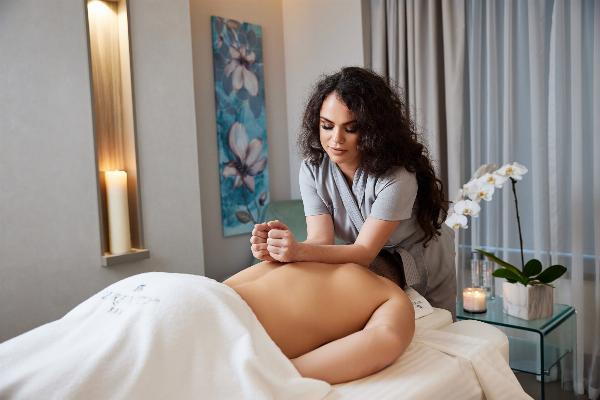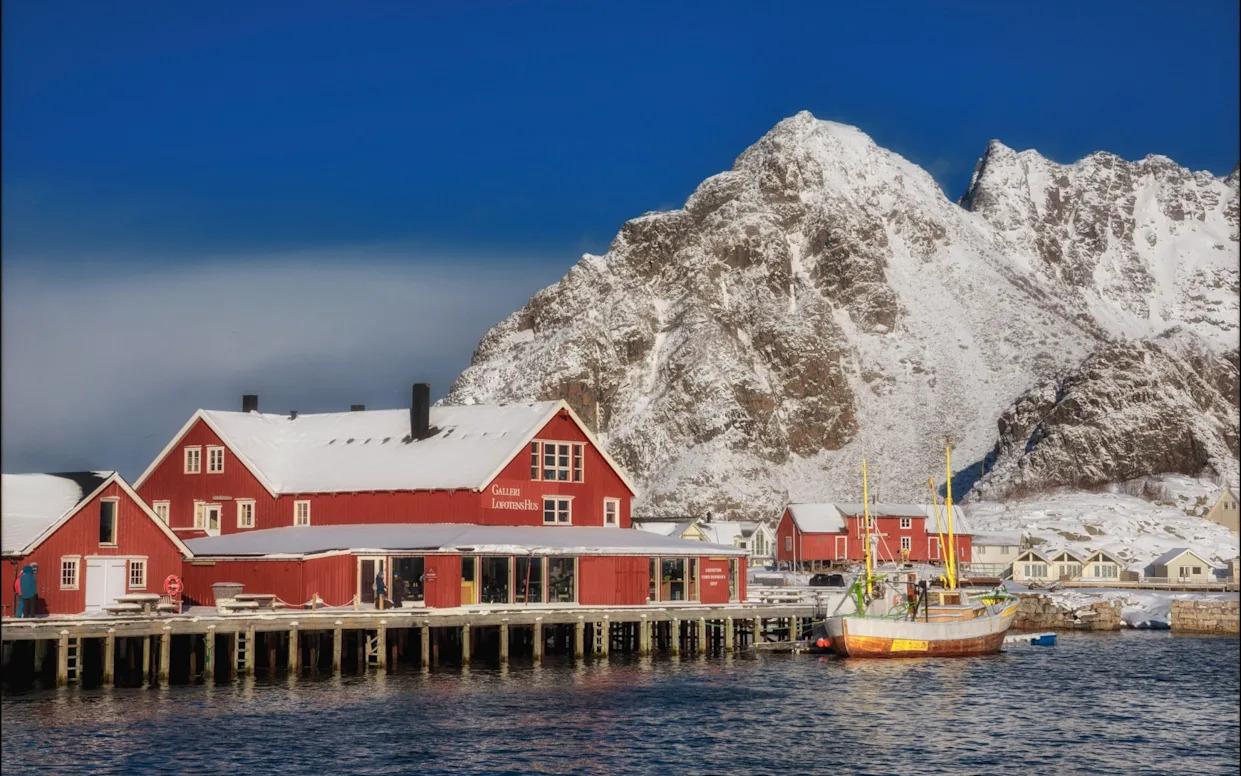
A jagged thread of granite and sea stacked above the Arctic Circle, Norway’s rugged Lofoten islands look less like they were placed on a map than hurled at it. Primordial, vast and vertical, its glacier-licked peaks tower so high they shrink the quaint fishing villages to toy-like scale and offer active adventure beneath the unceasing glow of the midnight sun in summer. Nature doesn’t whisper here – it shouts.
Despite its remoteness, since the mid-2010s, Lofoten has found itself the darling of drones and Instagram, with shots from Reinebringen, Matmora and Festvagtind plastered across social feeds. But most visitors stick to the obvious and, at 93 miles long, there’s ample opportunity to go off-piste.
The best views in Lofoten are earned on foot, but even from behind the wheel the views are cinematic. Here, the roads are ribbon-thin and thrilling – skimming the sea, brushing past cliffs, delivering more drama in 10 miles than most road trips manage in a week. We’ve mapped out a one-week itinerary around this salt-licked edge of the world that mixes must-sees with some off-the-beaten-track options, so you can experience a version of Lofoten far richer than a hashtag.
Where to go
Day 1
Rib safari
Start in Svolvær, the archipelago’s unofficial capital. Cod still defines life here – just check the town’s coat of arms. Ease in with a Rib safari down Trollfjord, a crack of sea flanked by walls of granite that is patrolled by white-tailed sea eagles and occasionally seals and orcas – for a solid outfit, book with XX Lofoten. But to really get your bearings lace up and hit the Floya Trail, a short, sharp one-mile hike that climbs fast and delivers big views. On the way, you’ll pass Djevelporten, or “the Devil’s Gate”, a massive boulder improbably wedged between two cliffs. Skip the Magic Ice Bar in favour of the skrei (cod) served at Paleo Arctic Restaurant.
Day 2
Art galleries
Next day, drive 30 minutes to “Venice of the North” Henningsvær, a scattering of islands stitched together by low bridges and loaded with art and creative energy thanks to KaviarFactory, a former processing plant for “black gold” turned trend-setting modern art gallery and Galleri Lofoten, which showcases 19th-century North Norwegian masters like Otto Sinding and Gunnar Berg. Seek out quirky shops Engelskmannsbrygga, for ceramics and glass art, and Lysstøperi, for candles and locally roasted coffee. And book a bed at Trevarefabrikken, where you can drink unlimited botanical cocktails while listening to live sets.
Day 3
A Viking museum and cinnamon buns
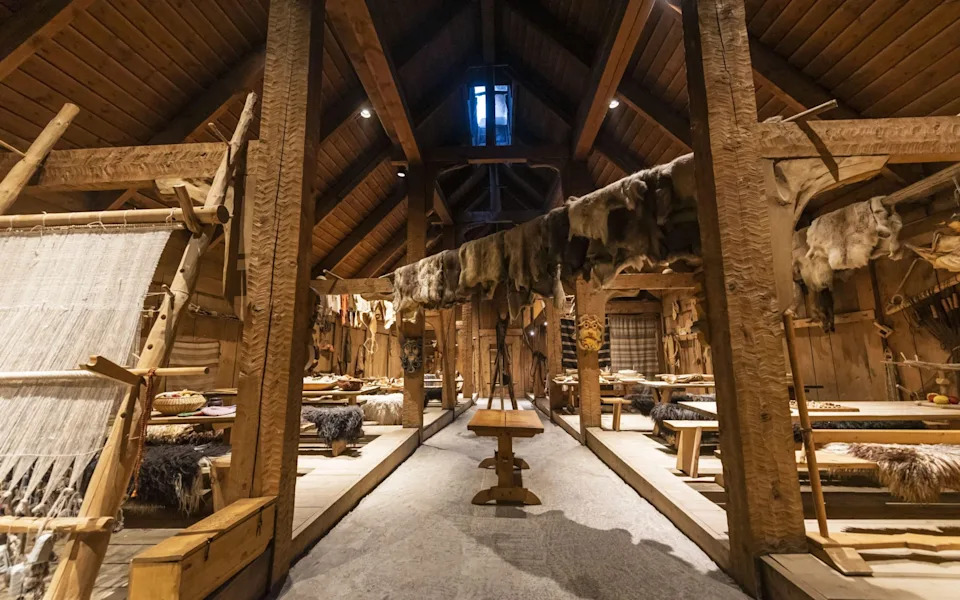 Inside Lofotr Viking Museum - Alamy
Inside Lofotr Viking Museum - AlamyBoulder westward towards the overlooked hamlet of Bøstad. Here is Lofotr Viking Museum, a full-scale reconstructed Viking longhouse complete with actors and an annual Viking festival in May and Aalan Gård, a family-run herb and cheese farm deep in the hills. Hop back in the car for 15 minutes to stop for a cinnamon bun at Unstad Arctic Surf Café and ogle surfers paddling out to catch breaks at this famous sandy cove. Ditch the crowds and follow the five-mile narrow coastal trail that runs from Unstad to Eggum, passing World War II relics and through seabird-rich Eggum Nature Reserve. Near the finish, watch for The Head – a shape-shifting sculpture by Markus Raetz that transforms with your perspective. Return to Bøstad to sleep at Furu Hostel.
Day 4
Kayaking and sauna time
Nudge on toward Nusfjord, one of Norway’s oldest and best-preserved fishing villages. Paddle its glassy waters by kayak, then sweat it out with a sauna ritual at the open-air Nusfjord Arctic Wellness area perched above the fjord. Warm up afterwards at wooden-walled Karoline Restaurant, where candlelight meets cod: think seasonal specialities such as reindeer carpaccio and traditional bacalao stew.
Days 5 and 6
Fish burgers and a challenging trek
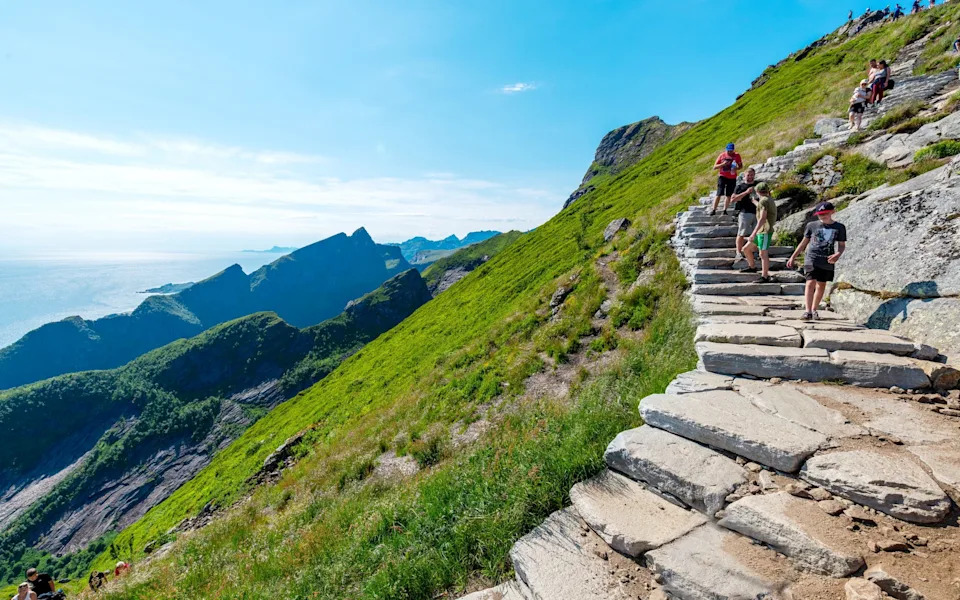 Reinebringen features some 2,000 stone steps built by Nepalese Sherpas - iStock Editorial
Reinebringen features some 2,000 stone steps built by Nepalese Sherpas - iStock EditorialSnake southwards to Reine – Lofoten’s poster child for epic scenery. This is your chance to tick off the famously steep Reinebringen, one of Norway’s most iconic and challenging treks that includes tackling some 2,000 stone steps built by Nepalese Sherpas. Hike late in the day for soft light and fewer people. The following day drive to the island of Sakrisøy to sink your teeth into the lauded fish burger served by Anita’s Sjømat, then onto Hamnoy Bridge for a photo-op of the quintessential red rorbuers (fishermen’s cabins) set against dramatic peaks and then follow the road until it runs out at time-forgotten A – confusingly pronounced “O”. Home to just 150, visit the Stockfish Museum to learn how cod built an economy and fed empires and the bakery for a sweet-fix cinnamon bun.
Day 7
Hiking
For the final day, double back toward under-the-radar Sørvågen, the launchpad for one of Lofoten’s most rewarding hikes up to Munkebu Hut. If you’re up for it, start early: it’s a four–six hour round trip over fjords and peaks that feel untouched. Before or after, drop into Sørvågen Radio (open summers only), where northern Europe’s first Morse signals crackled out and end your trip on a high with a wildly local knockout meal at Holmen Lofoten.
Where to stay
Furu Hostel
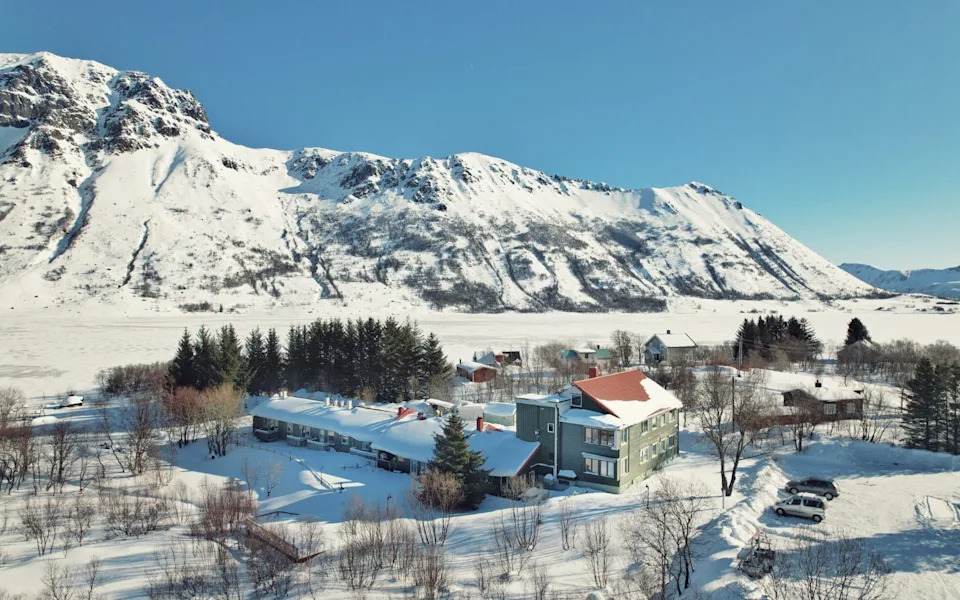 Dorm beds at Furu Hostel start from £35 per night
Dorm beds at Furu Hostel start from £35 per nightAn eco-conscious hostel designed for adventurers in Bøstad with a lakeside sauna and café with locally sourced food. Owners Guri and Arne can organise Arctic surfing, kayaking, SUP, biking, hiking – you name it. Dorm beds from £35 per night.
Holmen Lofoten
This remote, luxurious eco-lodge based in Sørvågen is renowned for its “Kitchen on the Edge of the World”, where guest chefs conjure up world-class tasting menus. Rooms from £218 per night.
Trevarefabrikken
An old carpentry workshop transformed into a minimalist wellness-focussed design hotel with yoga studio and ocean-view sauna based in artsy Henningsvær. Rooms from £366 per night.
How to do it
When to go
Up to a million visitors arrive in summer, plus 300,000 cruise ship passengers – so book well ahead for summer journeys and aim to stay in less touristy villages. Or, travel in the shoulder seasons of May to June (for midnight sun) or September (for northern lights) to avoid the summer crowds, but still enjoy relatively mild weather.
What to book
Discover the World (01737 214 250) offer a nine-night self-drive Around Lofoten trip that runs from May to September and costs from £1,501 per person, excluding flights.
AdvertisementAdvertisement#«R36ekkr8lb2m7nfddbH1» iframe AdvertisementAdvertisement#«R56ekkr8lb2m7nfddbH1» iframeKE Adventure (01768 773 966) offer an 8-day Fjords and Fjells of the Lofoten Islands group tour that runs from June to September and costs £2,495 per person, including flights.
How to get there and how to get around
The Lofotens can’t be reached direct from the UK. All flights transit through Oslo. Norwegian Airlines fly from London Gatwick to Harstad/Narvik (Evenes) from £400 return and you can pick up a rental car and drive from there. Alternatively, Scandinavian Airlines fly from London Heathrow or Gatwick to Bodo from £158 return and you can fly with Wideroe Airlines to either Leknes or Svolvaer from €30 or catch the cheaper ferry to either Moskenes or Svolvaer.
Public transportation is limited and infrequent. It’s best to rent a car (be prepared for narrow roads). All the major car rental companies have offices at Haarstad/Narvik airport and charge around £300 to 400 for a standard car for a week.
Broaden your horizons with award-winning British journalism. Try The Telegraph free for 1 month with unlimited access to our award-winning website, exclusive app, money-saving offers and more.



